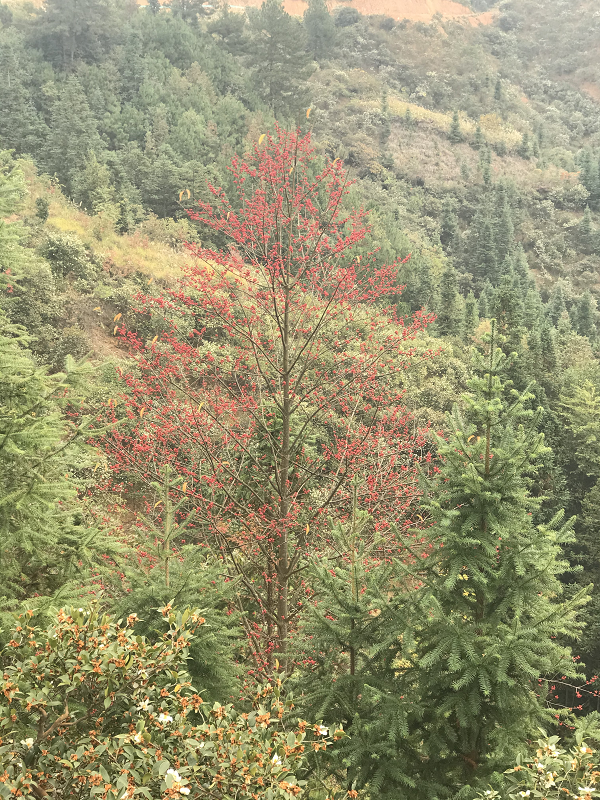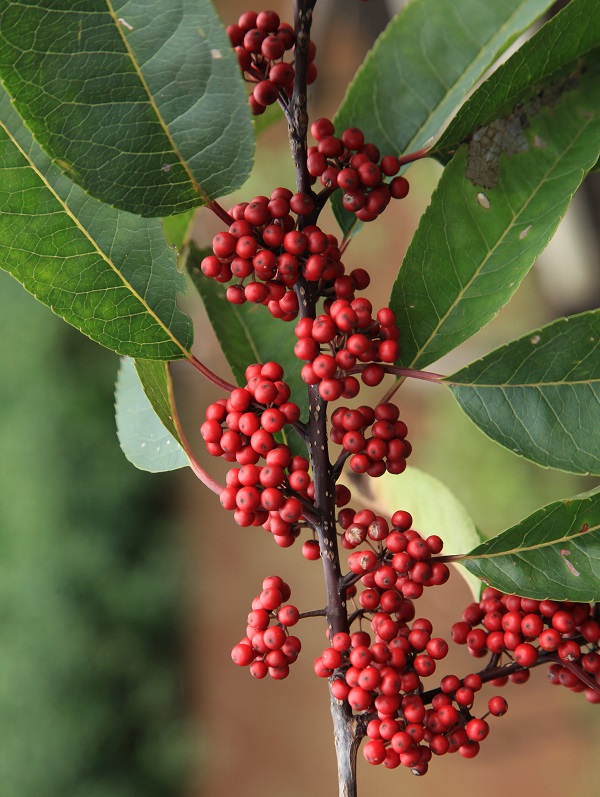Ilex (Aquifoliaceae), the hollies, is one of the largest and most characteristic woody dioecious genera in tropical and subtropical southwest China. Many different species throughout the range of the genus have been utilized as sources of beverages and medicines, ornamentals, honey plants, dyes, timber, and other minor uses. Subspecific variation has been utilized in horticulture for the development of new cultivars and hybrids, but not yet in the huge market for holly beverages and medicines.
In a study published in Horticulture Research, scientists from Xishuangbanna Tropical Botanical Garden (XTBG) investigated the subspecific variation and local adaptation in Ilex polyneura, a widespread diploid member of the deciduous East Asian clade. Using a combination of Illumina short reads, PacBio single-molecule real-time sequencing technology, and Hi-C techniques, they assembled the whole genome of Ilex polyneura.
Using the high-quality genome as a reference, they conducted a population genomics study of 112 individuals collected from 21 populations across the whole elevation range of the species using restriction site-associated DNA sequencing (RADseq).
The assembled genome was approximately 727.10 Mb with a contig N50 size of 5124369 bp and a scaffold N50 size of 36593620 bp. A BUSCO analysis produced 97.6% universal single-copy orthologs, indicating high contiguity and completeness of the assembly, and 98.9% of the genome assembly was anchored to 20 pseudochromosomes.
“This is the first published genome at chromosome-scale in the huge genus Ilex as well as in the order Aquifoliales. It is also the only genome available for a woody member of the campanulids,” said YAO Xin of XTBG.
Population genetic analyses revealed evidence of divergent selection leading to genomic adaptation of Ilex polyneura to different elevations. Populations at low and high elevations had simpler genetic structures, while populations at medium elevations had mixed ancestry from both low and high elevations.
The study thus provided evidence for genetic divergence and significant local adaptation in the face of the expected high levels of gene flow between populations in Ilex.
Contact
YAO Xin Ph.D
Center for Integrative Conservation, Xishuangbanna Tropical Botanical Garden, Chinese Academy of Sciences, Menglun, Mengla, Yunnan 666303, China
E-mail: yaoxin@xtbg.ac.cn

Flowers of Ilex polyneura. (Image by YAO Xin)

Trees of Ilex polyneura. (Image by YAO Xin)

Fruits of Ilex polyneura. (Image by YAO Xin)



